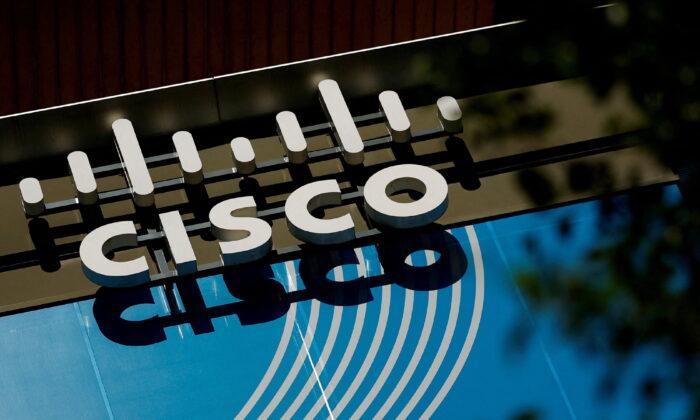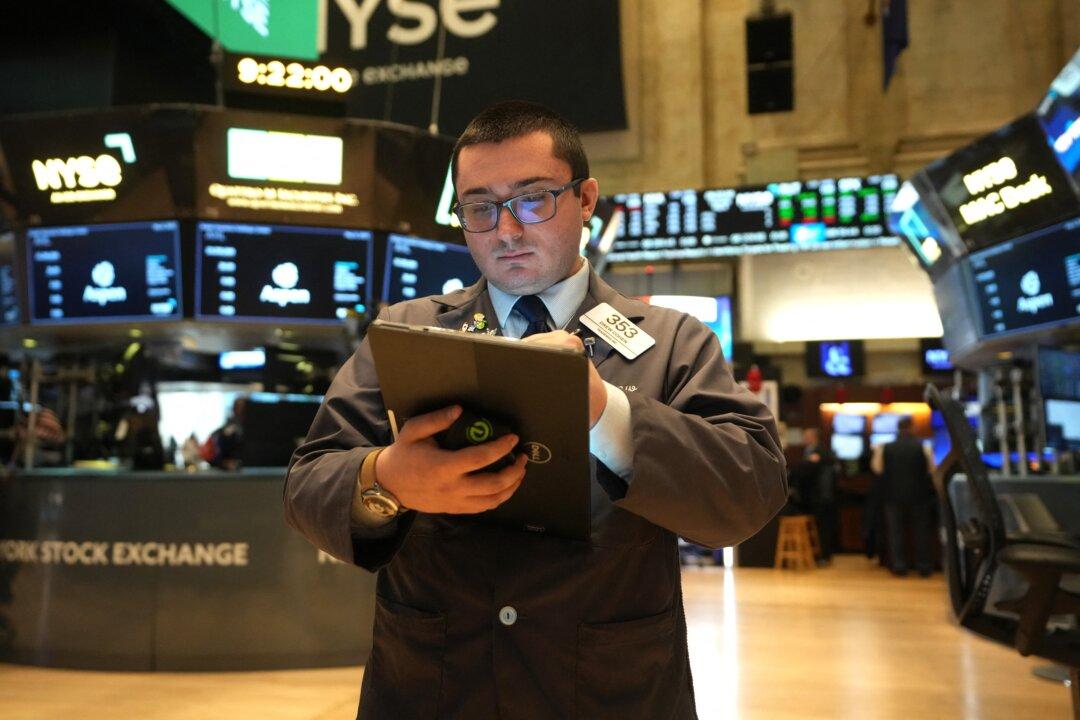U.S. stocks roared back this week, with the S&P 500 Index scoring a five-day winning streak and edging closer to its all-time highs reached last fall. News of easing trade tensions between the United States and China, along with a flurry of Middle East deals for U.S. companies, dominated trade activity.
The S&P 500 ended May 16 at 5,958, up by 5.27 percent for the week. The Dow rose by 3.41 percent to close at 42,654. The Nasdaq soared by 7.15 percent to 19,211, while the Russell 2000 added 4.46 percent to close at 2,113.
The week’s winners were companies that stand to benefit from easing trade tensions between the world’s two largest economies and from the slew of deals struck between Washington and Middle East nations during the recent presidential visit to the region.
At the top of the list is Nvidia, whose shares rose by 16.07 percent for the week, as both developments could boost demand for its chips.
Cisco Systems was another winner, climbing 6.44 percent, driven by news of Middle East partnerships and better-than-expected revenues and earnings for its most recent fiscal quarter.
Meanwhile, Boeing gained 5.63 percent following a big order for its passenger planes from Qatar Airways.
CoreWeave was also among the week’s big winners, with its shares surging by 56.32 percent on a wave of positive news, including Nvidia’s announcement of a significant stake in the company and a deal with OpenAI—both of which boosted investor interest in the newly publicly traded company.
One more notable winner was Coinbase Global, whose shares rallied 33.68 percent on news that it will join the S&P 500, meaning funds that track the index will now be required to include its stocks.
Health care stocks continued to lag, led by UnitedHealth Group, whose shares dropped by 23.31 percent. The stock has fallen for three straight weeks following disappointing earnings results.
Trading during the week was less volatile, with the Chicago Board Options Exchange Volatility Index declining, as most macroeconomic and trade headlines helped ease investor fears of an impending stagflation.
Market bulls raced out of the gate on May 12 following news of a temporary trade truce between the United States and China, which reduced the U.S. tariff rate on Chinese products to 30 percent from 145 percent, and the Chinese tariff rate on U.S. goods to 10 percent from 125 percent.
Wall Street experts welcomed the agreement that emerged from the two sides’ meeting in Switzerland over the weekend.
“The larger-than-expected drop in the tariffs between the U.S. and China, while temporary, and the establishment of a framework for continued discussion, is exactly what the stock market was hoping to see,” Carol Schleif, chief market strategist at BMO Private Wealth in Minneapolis, told The Epoch Times.
The massive rally that began on May 12 continued over the next two days, fueled by a wave of corporate deals between Washington and Middle Eastern countries during President Donald Trump’s visit to the region.
However, bears took the upper hand on the morning of May 15 after Walmart released its earnings. The retail giant had another strong quarter but said it would raise prices because of tariffs, reversing its previous policy of focusing on market share rather than profitability.
The decline was short-lived, though, as the “buying the dip” crowd emerged, helping the market recover quickly and head north by the end of the trading session.
“The stock market’s rally has legs, as the trade negotiation with China was seemingly the toughest one on the docket, and the idea that there has been this much progress on the negotiations over such a short period suggests that a resolution may be on the horizon,” Rick Gardner, chief investment officer of Raleigh, North Carolina-based RGA Investments, told The Epoch Times.
“What is remarkable about the market’s rebound since the April lows is the leadership of the technology sector, which was not leading the market in the early months of 2025 before the tariff situation escalated,” Gardner said.
He said the firm anticipates the tech sector will continue leading stock gains, as it is poised to benefit from easing trade tensions and renewed investor confidence in artificial intelligence prospects.
However, Gardner said that equity markets may have already factored in the prospect of weaker growth.
“Even if we see a continued economic slowdown, the stock market may have already priced that in during the April selloff,” he said.






